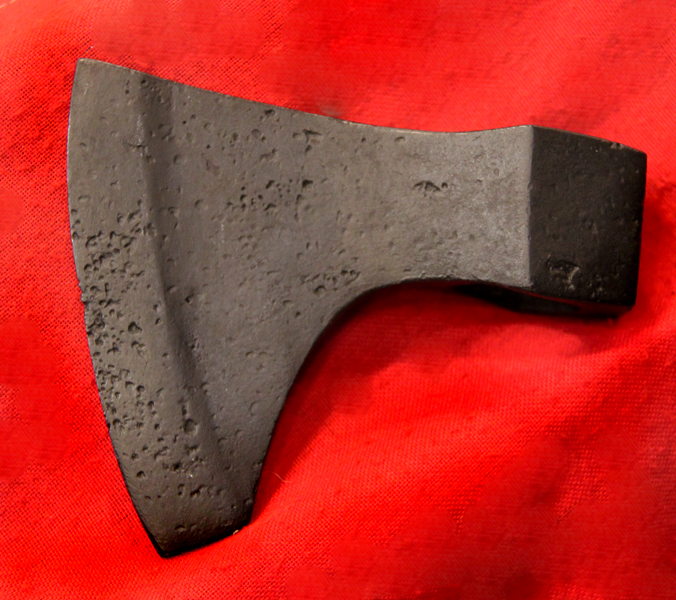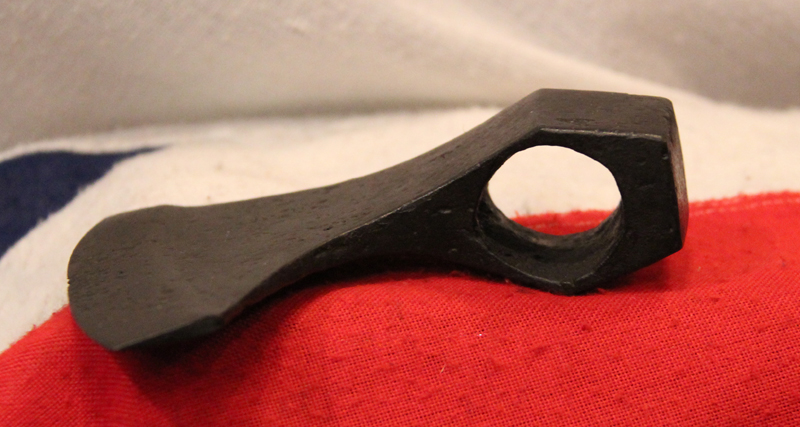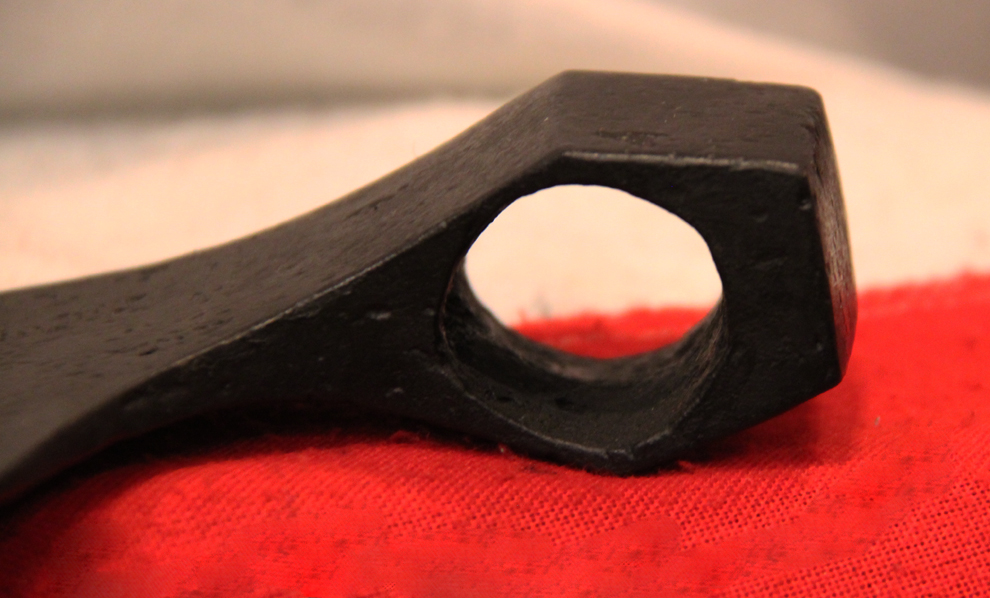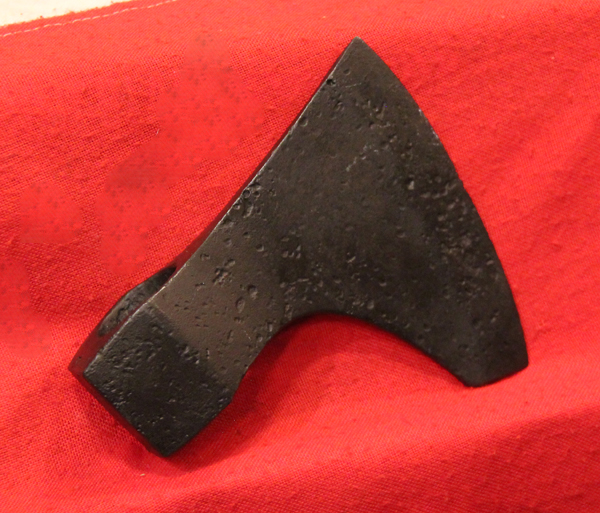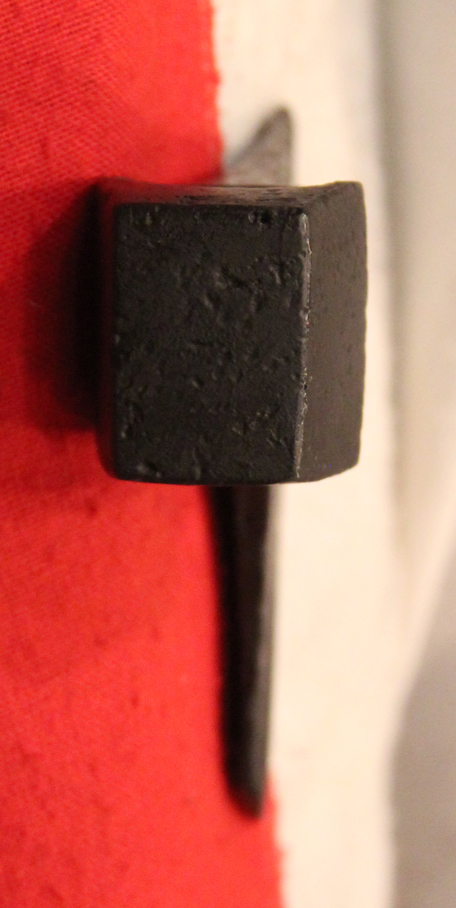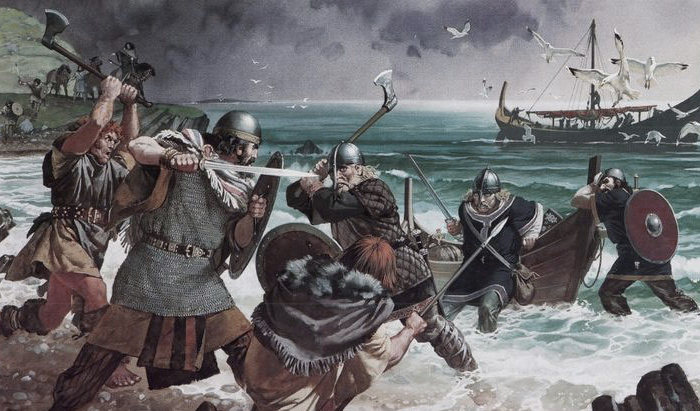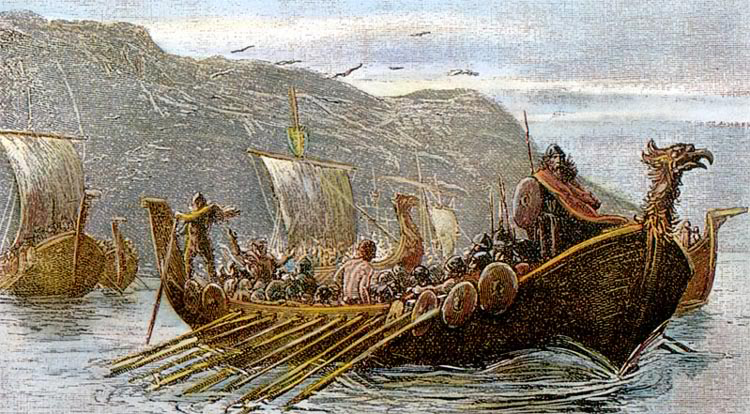Original 1000 Year Viking Battle-Hammer-Axe, the Era of King Eric Bloodaxe The Last Viking King of Northumbria
A wonderful medium size bearded Viking hammer-battle-axe, in great order for its age. In recovered yet very good conserved condition, the front has a fine steel blade forged into the iron form, with the reverse made into a flat helmet smashing hammer. For combat as a single handed short haft mounted blade. Knowledge about the arms and armour of the Viking age is based on archaeological finds, pictorial representation, and to some extent on the accounts in the Norse sagas and Norse laws recorded in the 13th century. According to custom, all free Norse men were required to own weapons and were permitted to carry them all the time. These arms were indicative of a Viking's social status: a wealthy Viking had a complete ensemble of a helmet, shield, mail shirt, and sword. However, swords were rarely used in battle in the same quantity as axes, as few Vikings were of the status to own or carry a sword, A typical bondi (freeman) was more likely to fight with a spear and shield, and axe, and most also carried a seax as a utility knife and side-arm. Bows were used in the opening stages of land battles and at sea, but they tended to be considered less "honourable" than a melee weapon.
The warfare and violence of the Vikings were often motivated and fuelled by their beliefs in Norse religion, focusing on Thor and Odin, the gods of war and death. In combat, it is believed that the Vikings sometimes engaged in a disordered style of frenetic, furious fighting known as berserkergang, leading them to be termed berserkers. Such tactics may have been deployed intentionally by shock troops, and the berserk-state may have been induced through ingestion of materials with psychoactive properties, such as the hallucinogenic mushrooms, Amanita muscaria, or large amounts of alcohol. Perhaps the most common hand weapon among Vikings was the axe swords were more expensive to make and only wealthy warriors could afford them. The prevalence of axes in archaeological sites can likely be attributed to its role as not just a weapon, but also a common tool. This is supported by the large number of grave sites of female Scandinavians containing axes. Several types of larger axes specialized for use in battle evolved, with larger heads and longer shafts.
Vikings most commonly carried sturdy axes that could be thrown or swung with head-splitting force. The Mammen Axe is a famous example of such battle-axes, ideally suited for throwing and melee combat.
An axe head was mostly wrought iron, with a steel cutting edge. This made the weapon less expensive than a sword, and was a standard item produced by blacksmiths, historically.
Like most other Scandinavian weaponry, axes were often given names. According to Snorri Sturluson's Prose Edda, axes were often named after she-trolls. A bearded 10th century Viking battle axe [that could double as a throwing axe] from the time of the last Viking, English King, Eric Bloodaxe, King of Northumbria. Probably the eldest son of King Harald Finehair [The first King of all Norway]. Eric's name probably derives from the legend that he murdered most of his 20 brothers, exepting Hakon. This was an unfortunate error as, upon Haralds death, Hakon returned to Norway from Britain to claim Harald's throne, and removed Eric from his Kingship. His elder brother Eric then fled Norway to Britain and to King Athelstan, an old friend of his father's, whereupon he took the Kingdom of Northumbria in around 947 a.d. While the sagas call him 'Bloodaxe', one of the Latin texts calls him fratris interfector (brother-killer), but, for whatever reason his name was derived, it was certainly a fine example of the descriptive titles the Viking warriors had, and that we are told of in the Viking sagas. 5 inches across. 400 grams
Code: 22099
1195.00 GBP

